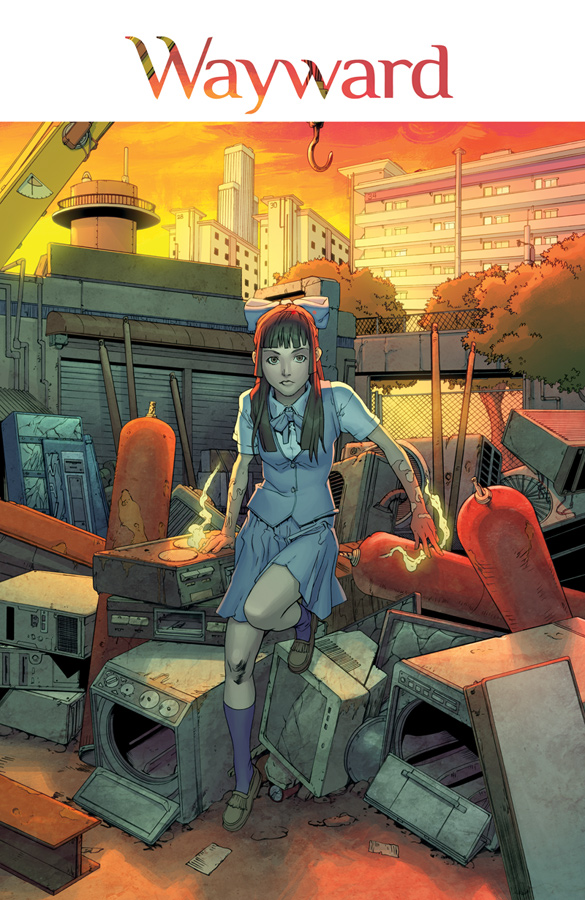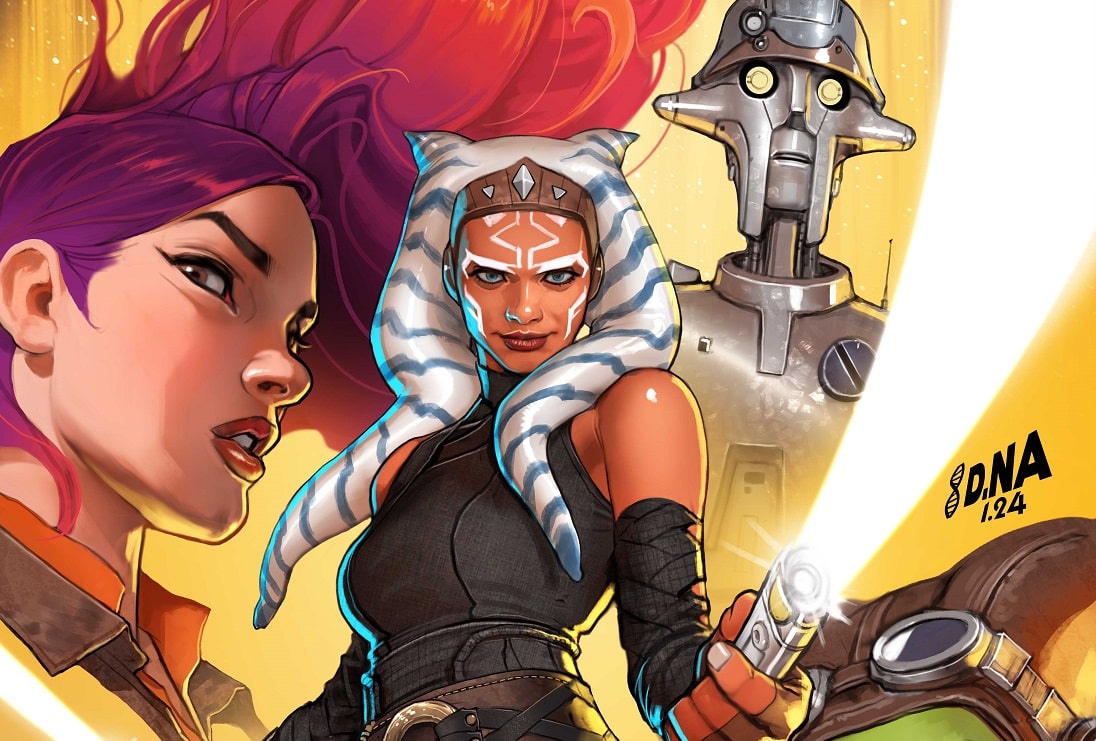Writer: Jim Zub
Pencils: Steve Cummings
Colors: Tamra Bonvillain
Letters: Marshall Dillon
Essay: Zack Davisson
After a brisk first issue, the subsequent installments of Wayward jam-packed the series with a ton of plot. In this new arc the comic goes back to basics covering a new protagonist. Emi Ohara is just the change in tone Wayward needed, and also serves to enrich this fictional Japan with new mythological elements. Author Jim Zub wisely chooses to pull the focus towards cast members that are already established, and have us question the motives of these individuals. The characters and concepts fleshed out in this story serve as a great jumping on point for new fans to take a look at the title.
This tale reimagining Japan as a lynchpin for mystic weirdness can feel cold and distant at times. With so many concepts lying around this series readers can occasionally get a sense of confusion trying to follow all of them. Thankfully Zub and artist Steven Cummings have been excellent in regards to their output in making sure this book ships on time (save a few months and change.) Getting to know this Universe through all the other work provided to readers within this package is another asset to the title.
The voice of the new female introduced here also works as a parallel to Rori, as this is someone who has lived in Japan all her life and hasn’t explored the world as an outsider. Rori has evolved so much over the past arc that it’s almost hard to relate with her worldview now. She see’s this version of Japan as something dark and dangerous – while Emi Ohara has grown up inside of Japan all her life. I would love to see the series shift into Emi’s perspective for clarity’s sake until we can get a read into Rori’s new lifestyle.
One of the best parts of this story is how Emi is able to take a look at all the strange things that happened in the last story-arc and and voice directly what the reader is probably thinking: What is happening?
Then there’s Steven Cummings’ art. This might sound like a contradiction of sorts, but Cummings’ art has both layers of Eastern and Western approaches in the pencilling style. Contained within this work is epic shrines and landscapes alongside monsters whose designs depict a fusion of Japanese and American artwork. There’s several different elements of Wayward that has allowed this book to constantly be compared to Buffy: the Vampire Slayer. I believe that one of the distinctive elements of that show that made it such an incredible success was how it was easy to digest in most of it’s seasons. This art in this story is appealing to multiple demographics without seeming ‘broad.’ While there is a hefty amount of Japanese culture depicted in the story, there is also clean lines and bright coloring that move this story closer towards American comic book art standards.
While this issue is exactly the kind of story that’s going to serve the overall title very well in the near future, there a few things present in this story that are slightly less clear. For one thing, the cliffhanger fails to leave me with a compelling question about the what’s going to happen next, leaving me scratching my head with what I just read. Also, it is hard to get a feel for some of the mystical elements of the title. In addition, Rori and friends need to feel more relatable in the same manner as issue one depicted them.
Wayward is an Image series that’s sticking around with a second story-arc and six issues, and in this current wave of Image implosions that’s something worth celebrating. Here’s to six more – and another six just for good measure.









Comments are closed.